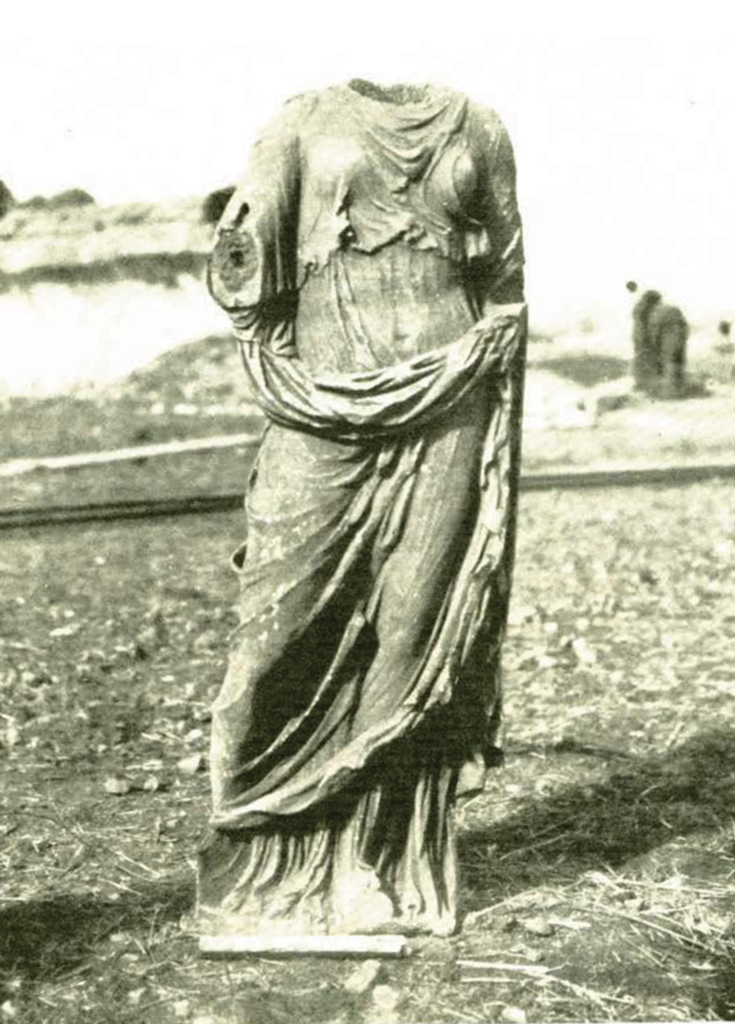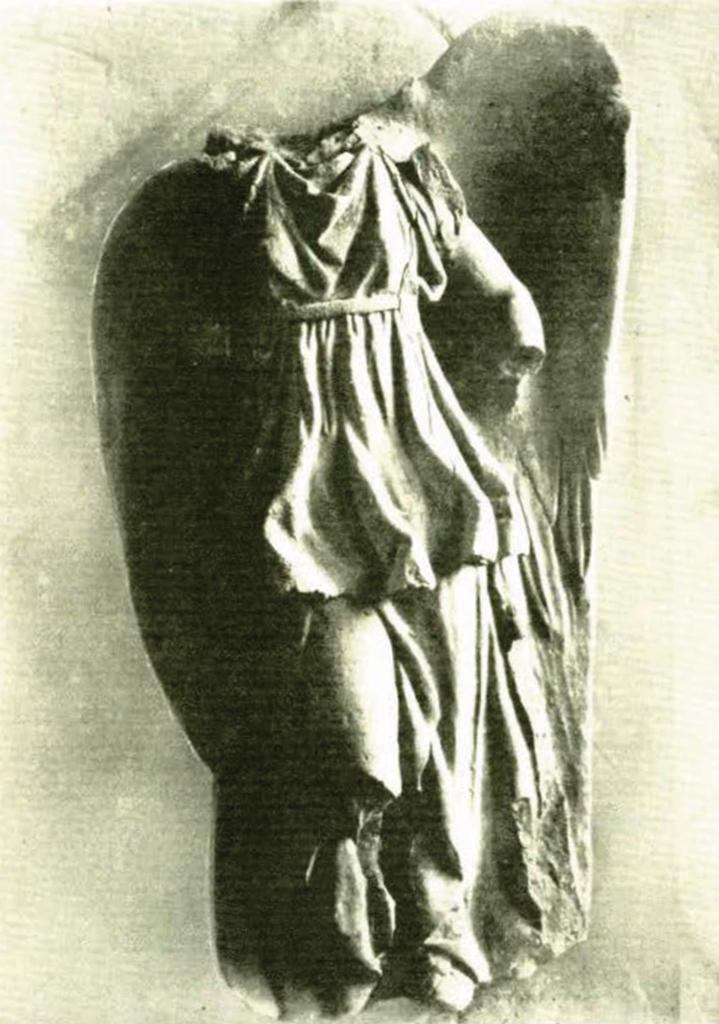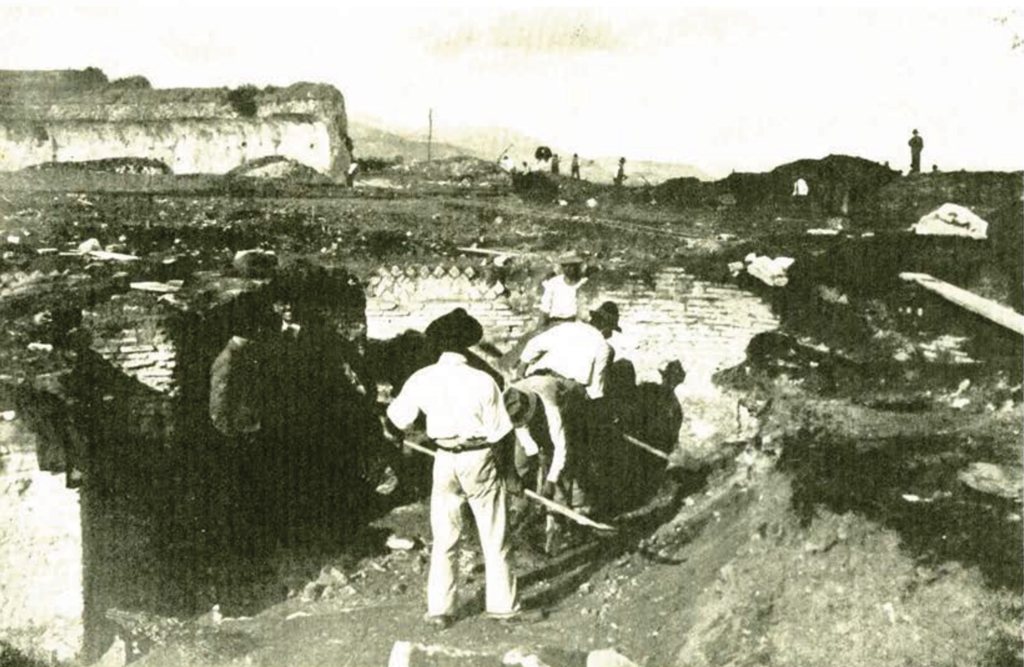
THROUGH the good offices of Count David A. Costantini, president of the International Society for Mediterranean Research, the Museum has been accorded the unusual privilege of undertaking archæological operations in Italy, a privilege which for many years has not been vouchsafed non-Italian institutions. In the arrangements for this work both the Society and the Museum have received the fullest cooperative encouragement from Commendatore Roberto Parabeni, Director of Archæological Research, and the Director of the Naples Museum, Dr. Amadeo Maiuri, under whose direct supervision the Museum’s work is conducted. Without the assistance and advice of these individuals it would have been impossible to have established this new bond of common endeavour. The Museum is further fortunate in having the support of Mr. Gustav Oberlaender, who has contributed generously, through the Wyomissing Foundation of Reading, Pennsylvania, to the support of this new venture.
The site selected was that of ancient Minturnæ, about fifty miles from Naples towards Rome. It lies directly upon the Appian Way, which in Roman days ran through the city, and a few miles from the coast to which anciently it had access by a small stream. The most striking feature of the neighbourhood is the well-known Minturnæ Aqueduct, which runs north-eastward from the site to the mountains upon whose foothills is the modern town of Minturno; the Aqueduct entered the city at the North Gate, a considerable part of which is now standing, where the remains of an elaborate fountain are still to be discerned.
Other features of the site are the theatre [Plate X], of which the semi-circular cave a is apparent, the Baths (so called, at least), massive buildings of Roman brickwork without any distinguishing features, and a half dozen indeterminate mounds. The only other excavation s ever reported to have been done at the site were during the Bourbon regime in Naples, when entirely unscientific digging brought to light a score or more of marble statues of the Roman period, which are now in the Museum at Zagreb, Yugoslavia.

Museum Object Number: 32-36-1
Image Number: 3488
The Museum’s excavations were started on August 10th, Dr. Jotham Johnson being placed in charge, under the direction and with the cooperation of Dr. Maiuri. The first week’s work revealed that the site was far more important than had been in any way anticipated. Not only were the finds of the Roman period of unusual quality and abundance, but the remains of the pre-Roman peoples were of singular interest and value.
The settlement of Minturnæ goes back to remote times. It probably existed before the founding of Rome and it is known to have been admitted as a Roman Colony in 295 B. c., one of the earliest towns to be granted this privilege.
Of pre-Roman remains, the Museum’s excavations have already revealed the walls of probably the earliest acropolis built of Cyclopian blocks, and the massive regular construction of the walls of a somewhat later epoch. A temple podium, also probably pre-Roman, has been uncovered and, by great good fortune, in a neighbouring trench have been found the fragments of what in all probability are the pediment sculptures of this Temple wrought in painted terra-cotta. In addition, many examples of the terra-cotta roof ornaments and bas-relief decorations have been already brought to light, sufficient to make an exact reproduction of the temples on paper.
Of the Roman period the finds are no less striking: a very fine private portrait head of about 50 B. c., a life-sized head of Tiberius of good quality, an heroic head and torso of the same Emperor are outstanding, while numerous inscriptions, architectural details, small objects of bronze, pottery and glass, serve to increase the yield. The base of a Greek statue, preserving the leg of a young man and inscribed as the joint work of Kallimachos and Gorgias, encourages the hope of further finds of this important artistic epoch. The site as a whole is undoubtedly one of singular value.

Dr. Maiuri will be remembered for his long association with the work at Pompeii, which demonstrated his excellent archæological methods, particularly in connection with the Villa of the Mysteries, which he has recently published. His advice in the conduct of the work at Minturno is most welcome.
It is indeed gratifying that the first American excavations in Italy, after a lapse of many years, should result in such valuable finds at the outset. It augurs well for the future of such international cooperation, through which it should be possible to accomplish a great advance in historical knowledge.

